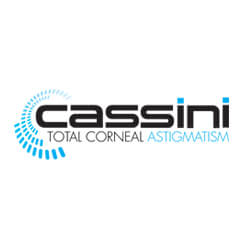See all Cassini video's on YouTube here
Cassini Total Corneal Astigmatism helps cataract surgeons to better understand corneal properties in order to improve outcomes and increase premium patient volume. Cassini offers a full suite of examinations required for toric and multifocal IOL implantation. This includes corneal topography, mesopic and photopic pupillometry as well as full color photography for diagnostic purpose. The technology employs red, green and yellow LEDs that are each positioned in a unique relationship to four of its neighbors, giving each one a ’gps-like’ coordinate. Cassini uses the ray- tracing principle to measure the relative position of each point, using the three different colors as ‘triangulation’ points. www.cassinitca.com http://i-optics.com/library/#videos

